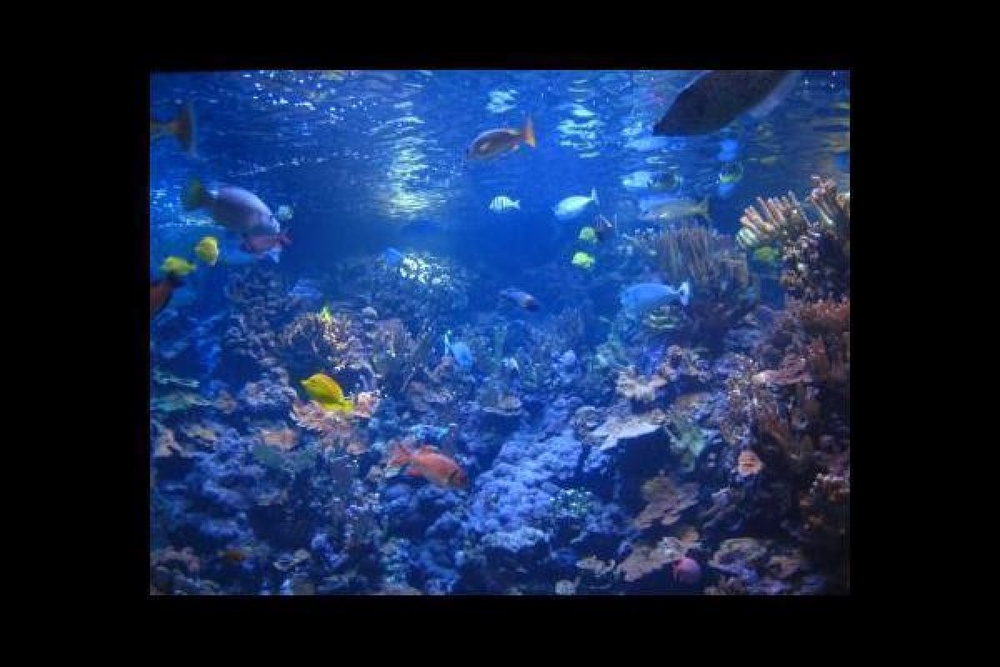
Scientists said Sunday they had discovered an unexpectedly large and active community of single-cell organisms living on the Pacific sea floor at the deepest site on Earth, AFP reports. The "surprisingly active" community of microbes exists about 11 kilometres (seven miles) below sea level in the Mariana Trench, one of the world's most inaccessible places, some 200 miles southwest of the Pacific island of Guam. Surprisingly, researchers found the trench housed almost 10 times more bacteria than a nearby six-kilometre deep site, living on organic waste from dead sea animals, algae and other microbes that settle on the ocean floor. Many scientists had thought that the deeper the floor below sea level, the more deprived it would be of food -- which has to float all the way from the oxygen-rich surface to the bottom of the ocean. In fact, the team found the Mariana Trench was unexpectedly rich in organic matter. "Their analysis document that a highly active bacteria community exists in the sediment of the trench, even though the environment is under extreme pressure almost 1,100 times higher than at sea level," said a press statement. Mariana Trench made headlines a year ago when Hollywood director James Cameron made history's first solo trip by submarine to the bottom. He described a "desolate" and "alien" environment. Because of its extreme depth, the Mariana Trench is cloaked in perpetual darkness with temperatures just a few degrees above freezing. The water pressure at the bottom is a crushing eight tons per square inch -- about a thousand times the standard atmospheric pressure at sea level. Before Cameron, the trench had been visited only once before, and briefly, by a two-man crew in 1960. For the latest study, an international research team used a specially designed underwater robot with ultrathin sensors to probe the seabed for oxygen consumption in a 2010 expedition. Scientists cannot remove samples to study in the laboratory as many of the microorganisms specially adapted to life at these extreme conditions will die due to changes in temperature and pressure. The team also made videos of the bottom of the trench and confirmed there were very few large animals at these depths. "Rather, we find a world dominated by microbes that are adapted to function effectively at conditions highly inhospitable to most higher organisms," said team leader Ronnie Glud from the University of Southern Denmark's Nordic Centre for Earth Evolution. Mariana Trench is a crescent-shaped scar in the Earth's crust, more than 1,500 miles (2,550 kilometres) long and 43 miles (69 kilometres) wide on average.





Scientists said Sunday they had discovered an unexpectedly large and active community of single-cell organisms living on the Pacific sea floor at the deepest site on Earth, AFP reports.
The "surprisingly active" community of microbes exists about 11 kilometres (seven miles) below sea level in the Mariana Trench, one of the world's most inaccessible places, some 200 miles southwest of the Pacific island of Guam.
Surprisingly, researchers found the trench housed almost 10 times more bacteria than a nearby six-kilometre deep site, living on organic waste from dead sea animals, algae and other microbes that settle on the ocean floor.
Many scientists had thought that the deeper the floor below sea level, the more deprived it would be of food -- which has to float all the way from the oxygen-rich surface to the bottom of the ocean.
In fact, the team found the Mariana Trench was unexpectedly rich in organic matter.
"Their analysis document that a highly active bacteria community exists in the sediment of the trench, even though the environment is under extreme pressure almost 1,100 times higher than at sea level," said a press statement.
Mariana Trench made headlines a year ago when Hollywood director James Cameron made history's first solo trip by submarine to the bottom.
He described a "desolate" and "alien" environment.
Because of its extreme depth, the Mariana Trench is cloaked in perpetual darkness with temperatures just a few degrees above freezing.
The water pressure at the bottom is a crushing eight tons per square inch -- about a thousand times the standard atmospheric pressure at sea level.
Before Cameron, the trench had been visited only once before, and briefly, by a two-man crew in 1960.
For the latest study, an international research team used a specially designed underwater robot with ultrathin sensors to probe the seabed for oxygen consumption in a 2010 expedition.
Scientists cannot remove samples to study in the laboratory as many of the microorganisms specially adapted to life at these extreme conditions will die due to changes in temperature and pressure.
The team also made videos of the bottom of the trench and confirmed there were very few large animals at these depths.
"Rather, we find a world dominated by microbes that are adapted to function effectively at conditions highly inhospitable to most higher organisms," said team leader Ronnie Glud from the University of Southern Denmark's Nordic Centre for Earth Evolution.
Mariana Trench is a crescent-shaped scar in the Earth's crust, more than 1,500 miles (2,550 kilometres) long and 43 miles (69 kilometres) wide on average.


 +7 (777) 001 44 99
+7 (777) 001 44 99















































